The Paris of Les Misérables
Paris: City of light, city of love, and city of Victor Hugo’s Les Misérables! Immortalized in its many incarnations, from the page to the stage to screens both big and small, Hugo’s Paris of 1832 largely exists no more. Learn about Les Misérables‘ real Parisienne locations—some of which are forever lost, and some that you can still visit today—and see a slideshow of filming locations that stand in for the settings that so vividly define the epic story.
- 1.
Pre-Haussmann Paris


The Paris we know today, with its Étoile around the Arc de Triomphe, its Bois de Boulogne, and the spire that until recently crowned Notre Dame, is a relatively recent creation. Between 1854 and 1870, much of the old, medieval city of Paris was destroyed and built into something entirely different by Baron Georges-Eugène Haussmann, who was commissioned by Napoleon III to remake a healthier, less congested, and more beautiful city. Some critics of his vision, with its network of wide, grand boulevards, argue that one of the motivations for razing the city’s neighborhoods was to rid them of the narrow, winding, dark streets that allowed for barricades, like those in Les Misérables, to be built.
Before the commencement of Haussmann’s radical modernization, the city’s official photographer, Charles Marville, was commissioned to document Paris’ ancient, soon-to-be-demolished, quarters. His photographs served as inspiration for Les Misérables‘ production team, who cited them as a crucial reference for a city lost to the past.
- 2.
Jardins de Luxembourg


One of Les Misérables‘ key locations is the Jardins de Luxembourg (Luxembourg Gardens). There, Marius and Cosette first catch one another’s eye as Cosette and Jean Valjean stroll the tree-lined promenades—an ideal setting for the beginning of a love story!
The Jardins de Luxembourg originated in 1611, when Marie de’ Medici, widow of Henry IV and regent of King Louis XIII, purchased the Hôtel de Luxembourg, known today as the Petit Luxembourg Palace. She then commissioned the construction of a new palace, and over the ensuing decades she had the famous Medici Fountain built, and gardens and parklands developed in the Italian Renaissance style of those she’d appreciated during her childhood in Florence. As time went on, the Jardins de Luxembourg evolved into the style of jardin à la française (French formal garden), the most famous example of which are the gardens at Versailles.
- 3.
Musée des Égouts de Paris (Paris Sewer Museum)


What can only be described as the opposite of the Jardins de Luxembourg (in light, in odor, and in order!) are Paris’ sewers. They feature prominently in Les Misérables, when Jean Valjean, after escaping the horror of the barricade, experiences a dark night of the soul while carrying a severely wounded Marius through the pitch-black sewer tunnels that course below the streets of Paris. At the locked gate blocking his exit from the sewer, he encounters Thenardier, who has been hiding out in the sewers since his escape from jail.
Before the middle ages, Paris’ wastewater was dumped on fields or the city’s unpaved streets; when the streets were paved around 1200, drains for wastewater were incorporated in the center. Later, the first sewers were constructed under Rue Monmartre in 1370, moving the city’s wastewater to the Menilmontant Brook and transforming the old small river into an uncovered sewer that drained in open air. Public health suffered and insanitary conditions spread disease. It wasn’t until Napoleon Bonaparte’s reign that the first covered sewers were built, and under Napoleon III, in 1855, new aquaducts and sewers were commissioned, executed by none other than Baron Haussmann. While Haussmann did away with the old sewers just as he did Paris’ ancient neighborhoods, you can still get a sense of the notorious subterranean tunnels at Paris’ Musée des Égouts (Sewer Museum). That such a museum exists may surprise, but Paris’ sewers have long been a tourist destination—even back in Victor Hugo’s day, tours were given of the sewers, where sight-seers were transported by carts suspended from walkways that traced the walls, and later by carriages pulled by a locomotive!
- 4.
Église Saint-Paul-Saint-Louis

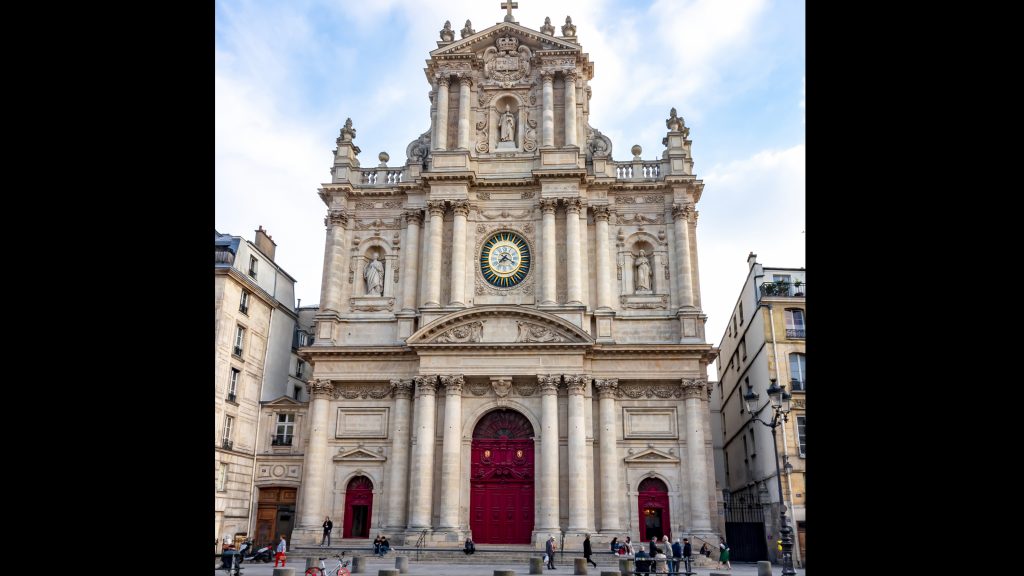
Les Misérables made us les joyeux when Cosette and Marius wed one another in beautiful Église Saint-Paul Saint-Louis. The Église Saint-Paul Saint-Louis is the only remaining Jesuit church in Paris. Built in an elaborate baroque style in the heart of the Marais quarter, it was financed by King Louis XIII and constructed between 1627 and 1641. The church was plundered during the French Revolution, when it was used as a storehouse for books. Many of its artworks were destroyed at that time, as well as relics including the hearts of King Louis XIII and Louis XIV! Another revolutionary piece of the church’s history can be found on a faint message inscribed on a pillar on the right side of the nave: “République française ou la mort” (French Republic or death). It was written during the violent resistance of the Paris Commune of 1871, when Versailles troops entered Paris to put down an insurrection.
- 5.
The Convent of Petit-Picpus


Convent du Bénédictines du Saint-Sacrement After their close escape from Javert in a dead-end alley, Jean Valjean and Cosette end up in the convent of Petit-Picpus, where they live for several years in quiet safety and contemplation. Yet unlike so many of Victor Hugo’s other Les Misérables locations, the convent of the Petit-Picpus did not exist. It was, however, based on an amalgam of other locations Hugo had heard about or encountered in his life, and a number of scholars, in search of the real Petit-Picpus, have identified the primary model for the convent as the monastery Bénédictines du Saint-Sacrement. It was Hugo’s mistress Léonie Biard who provided him with information about the convent, having learned about its school from a relative, and having visited it while considering a school for her own daughter.
Also considered a model for Petit-Picpus was the convent of the Dames de Sainte-Madeleine. Another of Hugo’s mistresses, Juliette Drouet, had been a pupil there, and he drew notes from her experiences. Finally, in pre-Haussmann Paris there was a Rue Picpus and a Picpus Cemetery. Adjacent to it was the convent of the Sacrés Coeurs de Jésus et de Marie de l’Adoration Perpetuelle.
- 6.
Film Locations
Now that you’ve seen the real Paris locations of Les Misérables, see where many of its scenes were filmed and get inside information about the real-life locations and the filming!
1 of 14


Pont au Change, Paris: Namur, Belgium
Standing in for Paris’ Pont au Change is the Jambes Bridge over the River Meuse in Namur, the capitol of Wallonia, Belgium’s French-speaking region. Les Misérables‘ production crew took over the bridge for a night to film Javert’s devastating suicide.


St. John de Baptiste du Béguinage Church
This 17th century Baroque church in the heart of Brussels stands in for Paris’ Eglise Saint-Paul Saint-Louis, where Marius and Cosette are married. (It also serves as the church where young Marius meet Mabeuf, and where Marius, during his childhood, was watched by his father, Eglise Saint-Supice in the novel.)

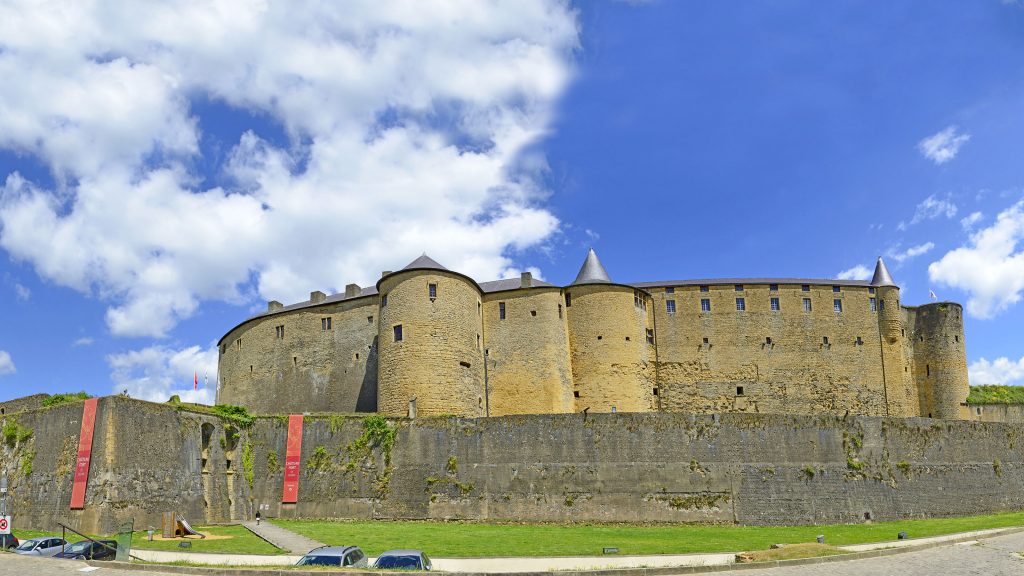
Prison Colony of Toulon: Chateau de Sedan, France
In the center of the northeastern French city of Sedan sits the medieval castle Chateau de Sedan, which serves as the location for the notorious prison colony Bagne of Toulon. Jean Valjean (Dominic West) and the other prisoners were marched in chains on the Chateau’s outskirts. Some prisoner interiors were shot outside of Brussels, at the abandoned Vilvoorde prison, while the rock quarry where Jean Valjean labors and Javert supervises is located about five miles outside of Sedan.


Battle of Waterloo: Écaussinnes, Belgium
The epic battle’s location was a field in the Flemish village of Écaussinnes, about 16 miles from the spot where the Battle of Waterloo actually took place. Les Misérables’ production designer Richard Bullock explains selecting the location ” …because it had this big hill in the middle of the field that represents this famous ditch, or lane, that ran through the battlefield. It was very important to all of us to try and recreate that.”


Battle of Waterloo: Écaussinnes, Belgium
“We have to create the whole battlefield here,” says VFX Supervisor David Sewell, “but what we actually are working with is probably an area of 40′ by 200′ that we’ve plowed and churned up and dressed. We then take about 60 extras—60 soldiers that we’ve got—and we’re going to add another thousand to that to create the whole battlefield that you see. And that’s the process of what’s called ‘matte painting.'”


The Bishop’s village, Digne: Marville, France
Not much was required to transform the medieval French village of Marville into the village of Digne, where Jean Valjean experiences kindness and humanity. Les Misérables’ producer Chris Carey told Conde Nast Traveller, “The fountain Valjean drinks from and the church in the square, even the bishop’s garden, were real. All we did was put a bit of stuff down on the ground and remove some aerials in post-production.”

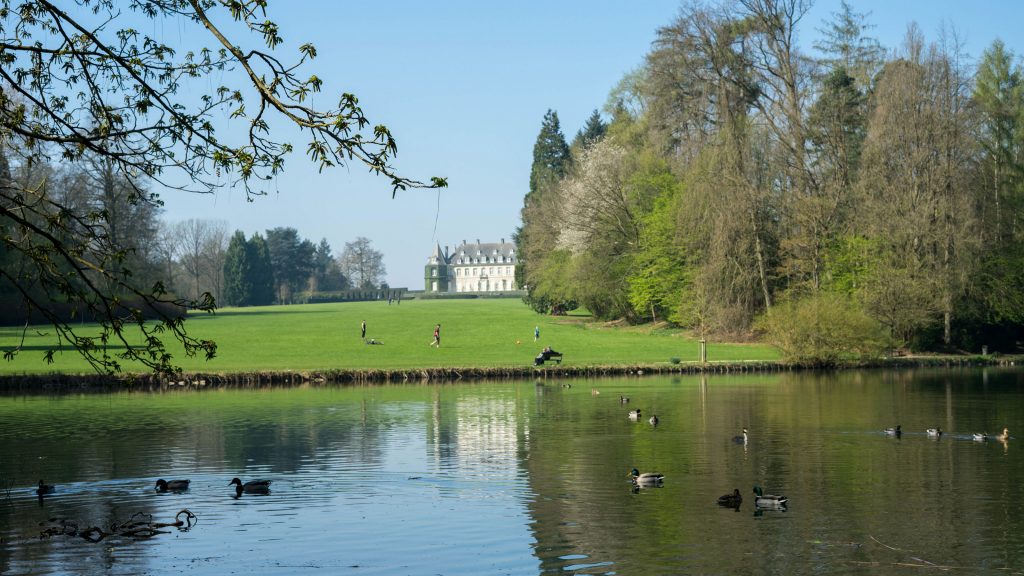
Solvay Castle, La Hulpe, Belgium
The grounds of Solvay Castle in La Hulpe, Belgium, served as the setting for the idyllic summer day of boating enjoyed by Fantine (Lily Collins) and Felix.

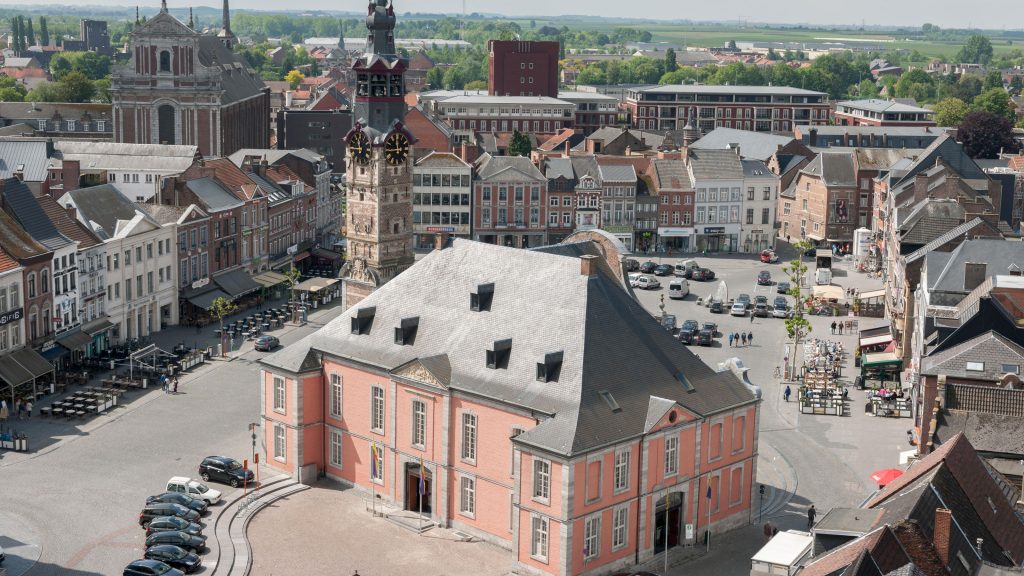
Montreuil: Limbourg, Belgium
Les Misérables author Victor Hugo visited the northern French town Montreuil-sur-Mer in 1837 and several years later, he made it the setting for Monsieur Madeleine’s (Jean Valjean’s) black glass jewelry factory. But the filming location for the medieval town was actually the Belgian city of Limbourg.
Les Misérables‘ producer Chris Carey described the Limbourg experience to Conde Nast Traveller, “Again, it looks exactly as it does on the tin…It’s great because, even though it’s not far away, it’s got a very different feel from the summery heat of Digne—we filmed in the winter, so it’s cold and greys and blues.”

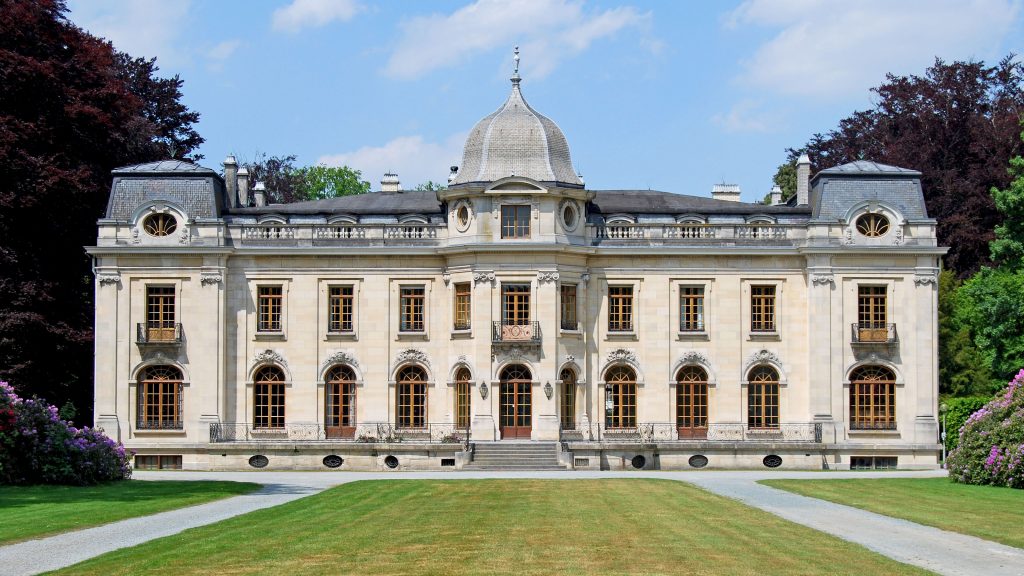
Police Headquarters, Paris: Enghien Castle
Though the Belgian château Enghien Castle dates back to the 13th century, none of the original remains. Today’s castle was built in 1913, and was made good use of in Les Misérables, serving as the Paris police headquarters where Inspector Javert reports that he’s found Jean Valjean…as well as other locations still to come in future episodes!


Château d’Ecaussines-Lalaing
Thenardier’s inn, Montefermeil & Arras courtroom: Château d’Ecaussines-Lalaing
The exterior of the Thenardier’s Au Sergent de Waterloo Inn was shot at Château de Meez, a riding school about 50 miles outside of Brussels. However, the interior of the inn (and, with some redressing, the Arras courtroom where Jean Valjean reveals his true identity) was filmed at Château d’Ecaussines-Lalaing, a Belgian castle with both Gothic and rococo elements.

Paris: Ghent, Belgium
Standing in for Paris in Episode 4 is the beautiful Belgian city of Ghent. Scenes were filmed on the Korenlei (a quay on the river Leie in Ghent’s historic city center), on the opposite side of the river, the Graslei, and at the city’s famous St. Michael’s Bridge. The distinctively Flemish stepped gables adorning the buildings had to be removed by the production’s CGI team so as to better masquerade as Paris.

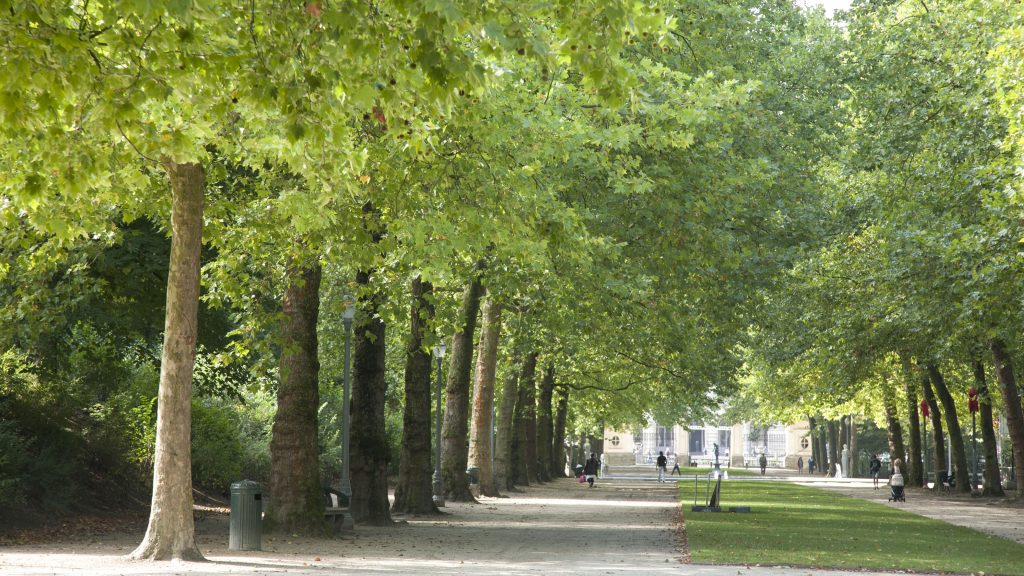
Luxembourg Gardens, Paris: Parc de Bruxelles, Belgium
The Luxembourg Gardens where Valjean takes Cosette (and she and Marius first encounter one another) were filmed in the Central Brussels’ Warandepark, the Parc de Bruxelles. This peaceful neoclassical setting was created between 1776 and 1783, and is set near the Palais Royal and the Palais de la Nation. It also features the cast iron bandstand, created in 1841, where Cosette playfully spins around in joy, much to the enchantment of Marius.

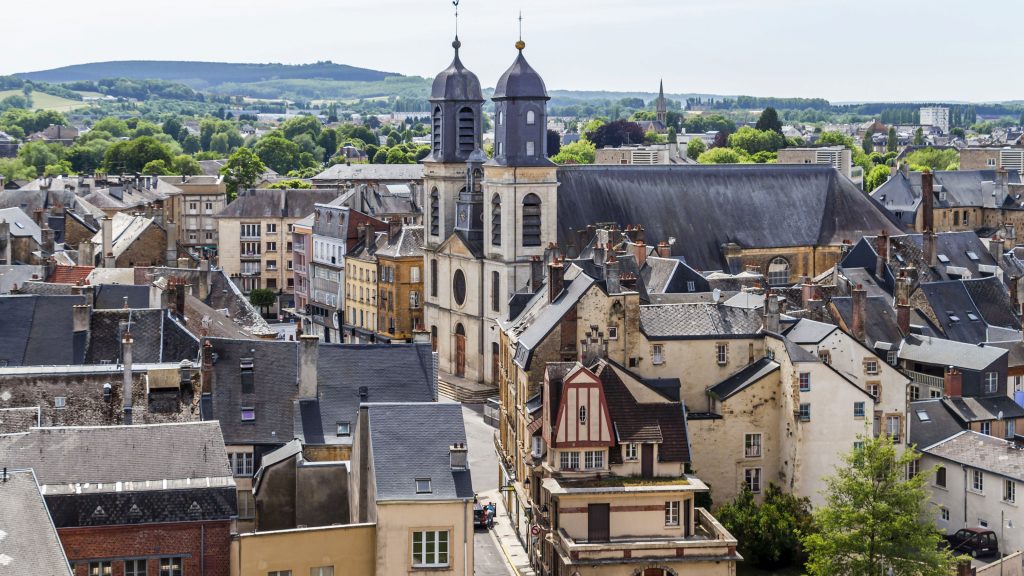
Paris: Sedan, France
Viewers visited the northeastern French city of Sedan in Episode 1, where the Chateau de Sedan was the location for scenes at the Toulon prison colony. Here, Sedan stands in for 19th century Paris. Over three weeks of filming took place in Sedan, one of which was dedicated to the 1832 June Rebellion. Les Misérables producer Chris Carey told Estrepublican that “we filmed at night, with guns, with a hundred people in the street at 5am.”


Paris: Sedan, France
Dominic West (Jean Valjean): We’ve taken over this beautiful town of Sedan, on the Belgian border. We have an amazing set designer, Richard, who’s created 19th century Paris out of this beautiful place.”
Richard Bullock (Production Designer): They gave us scale that we wouldn’t otherwise have had and again, a sense of authenticity because it’s real buildings. And it worked really nicely.
Chris Carey (Producer): It’s hugely complicated because people in these streets—this isn’t the back lot of a studio, this is a a living, breathing French town.

Pont au Change, Paris: Namur, Belgium
Standing in for Paris’ Pont au Change is the Jambes Bridge over the River Meuse in Namur, the capitol of Wallonia, Belgium’s French-speaking region. Les Misérables‘ production crew took over the bridge for a night to film Javert’s devastating suicide.


St. John de Baptiste du Béguinage Church
This 17th century Baroque church in the heart of Brussels stands in for Paris’ Eglise Saint-Paul Saint-Louis, where Marius and Cosette are married. (It also serves as the church where young Marius meet Mabeuf, and where Marius, during his childhood, was watched by his father, Eglise Saint-Supice in the novel.)


Prison Colony of Toulon: Chateau de Sedan, France
In the center of the northeastern French city of Sedan sits the medieval castle Chateau de Sedan, which serves as the location for the notorious prison colony Bagne of Toulon. Jean Valjean (Dominic West) and the other prisoners were marched in chains on the Chateau’s outskirts. Some prisoner interiors were shot outside of Brussels, at the abandoned Vilvoorde prison, while the rock quarry where Jean Valjean labors and Javert supervises is located about five miles outside of Sedan.


Battle of Waterloo: Écaussinnes, Belgium
The epic battle’s location was a field in the Flemish village of Écaussinnes, about 16 miles from the spot where the Battle of Waterloo actually took place. Les Misérables’ production designer Richard Bullock explains selecting the location ” …because it had this big hill in the middle of the field that represents this famous ditch, or lane, that ran through the battlefield. It was very important to all of us to try and recreate that.”



















